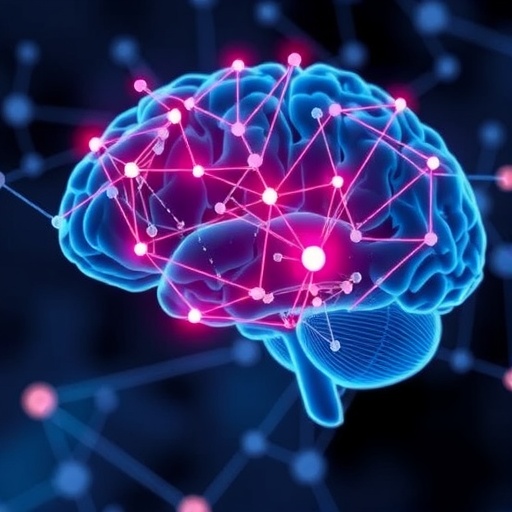A groundbreaking study spearheaded by researchers at NYU Langone Health unveils critical brain circuits that enhance the stability of memories during learning. Published in the prestigious journal Science on October 30, 2025, this research uncovers how intricate signaling pathways between the entorhinal cortex and the CA3 region of the hippocampus shape cognitive maps of places in the brains of mice, providing profound insights into memory formation and recall mechanisms.
The entorhinal-hippocampal circuit has long been recognized as a cornerstone of memory processing. It not only facilitates the encoding of new experiences but also enables the brain to recall memories based on partial cues, a process termed pattern completion. For this system to function reliably, the neural representations, or “place maps,” must remain stable despite environmental variations. This stability is essential for accurate memory retrieval, allowing organisms to navigate and behave appropriately in familiar contexts.
Disruptions in the neural computations within the CA3 hippocampal area have far-reaching implications, potentially triggering cognitive symptoms akin to those found in psychiatric disorders such as schizophrenia and post-traumatic stress disorder. For example, conditions in which memory precision falters may cause the brain to misfire associations—turning an innocuous stimulus, like a balloon pop at a party, into a triggering cue reminiscent of a traumatic explosion, thus evoking disproportionate fear responses.
Senior author Jayeeta Basu, PhD, an assistant professor in the Psychiatry and Neuroscience departments at NYU Langone Health, emphasizes that their findings bridge a significant knowledge gap in understanding how distal brain inputs modulate local neuronal circuits vital for memory. This research opens exciting avenues for developing targeted treatments aimed at rehabilitating memory dysfunctions by leveraging a deeper grasp of hippocampal place map stability.
Neurons transmit information through rapid electrical impulses generated by shifts in their charged state. These action potentials culminate in the release of neurotransmitters into synaptic gaps between cells. Depending on the receptor types they bind to, these chemical messengers either excite or inhibit downstream neurons. The resulting dynamic balance between excitation and inhibition shapes neural activity patterns, reducing background noise and facilitating meaningful thought processes.
Crucially, this equilibrium shifts during learning, as heightened excitatory signals signal the encoding of new memories. The specific firing patterns of neuronal ensembles define the uniqueness of each memory, with the reactivation of these patterns later recalling distinct experiences. Behaviorally, this is reflected in tasks such as spatial navigation, where a mouse learns to distinguish between two mazes based on where rewards like sugar water are found.
One enigmatic aspect addressed by the study is the role of long-range neuronal projections extending from the lateral entorhinal cortex (LEC) to the hippocampal CA3 region. These projections, comprising different neurotransmitter types, are hypothesized to stabilize memories by interacting with the local circuitry. Previously, details on how these long-range inputs balance established memory templates with incoming sensory information remained elusive.
The research team meticulously dissected two distinct long-range pathways from the LEC to CA3: excitatory glutamatergic (LECGLU) and inhibitory GABAergic (LECGABA) inputs. Their simultaneous activity was shown to synchronize ensembles of CA3 neurons, thereby reinforcing the stability of place-based memory networks during learning. This dual signaling mechanism illustrates how excitatory and inhibitory forces cooperate to refine memory encoding processes.
At the cellular level, LECGLU inputs primarily induce excitation in CA3 neurons but also activate feedforward inhibition that tempers excessive firing, ensuring precise neural responses. Meanwhile, LECGABA inputs act by suppressing local inhibitory interneurons, a process known as disinhibition, which effectively unleashes heightened excitatory activity in CA3. Together, these interactions create a balanced yet modifiable environment conducive to the formation of robust spatial memories.
Vincent Robert, PhD, a postdoctoral scholar and first author of the study, highlights that their findings decode the delicate neuronal choreography that amplifies brain cell excitation by fine-tuning the interplay of inhibition and disinhibition. This refined dialogue within microcircuits allows the brain to selectively prioritize sensory signals during learning, stabilizing hippocampal representations essential for accurate navigation and memory recall.
In a broader context, these insights offer a mechanistic understanding of how cognitive circuits dynamically balance plasticity and stability. By maintaining a degree of neural consistency amidst fluctuating inputs, the brain ensures that memories are neither too rigid to adapt nor too fragile to withstand minor environmental changes. This equilibrium is critical for normal cognitive function and may be perturbed in various neuropsychiatric disorders.
The study involved a multidisciplinary team including neuroscientists from NYU Langone and collaborators at the University of Texas, Austin, and Imperial College London. Their combined expertise, supported by National Institutes of Health funding and several prestigious awards, enabled the advanced experimental approaches necessary to elucidate these complex neural interactions at single-cell resolution.
This research not only advances fundamental neuroscience but also carries translational potential. A better grasp of the mechanisms stabilizing hippocampal place maps could lead to innovative therapeutic strategies to combat memory impairments in conditions ranging from Alzheimer’s disease to trauma-related disorders, ultimately improving patients’ quality of life.
NYU Langone Health continues its commitment to excellence in research, patient care, and education. As a leading academic medical center renowned for groundbreaking discoveries, NYU Langone’s integrated health system and research enterprise foster innovations that transform the understanding and treatment of human diseases, including those affecting the brain and cognition.
Subject of Research: Animals
Article Title: Cortical glutamatergic and GABAergic inputs support learning-driven hippocampal stability
News Publication Date: 30-Oct-2025
Web References: http://dx.doi.org/10.1126/science.adn0623
Keywords: Life sciences, Neuroscience




